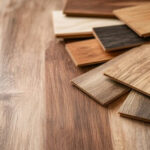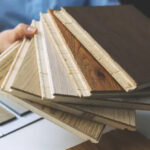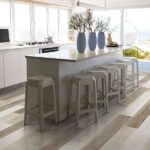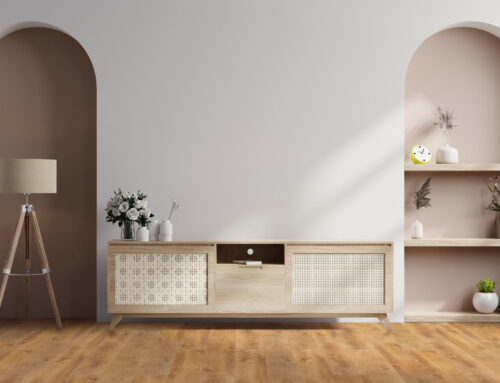Hardwood flooring is more than just the planks. It’s a system, complete with various components that work together to ensure the longevity, beauty, and functionality of the flooring. Each sundry item plays a pivotal role, and understanding these roles is key to successful hardwood floor installation and maintenance.
Expanded Insights into Essential Sundries
1. Adhesives and Glues
- Role: They provide a strong bond between the hardwood planks and the subfloor. This is crucial for minimizing movement and squeaks.
- Types: There are different types of adhesives for various hardwood floors. For instance, some are specifically designed for engineered wood, while others are for solid hardwood.
- Considerations: Factors like drying time, VOC levels, and compatibility with subfloor and wood type should be considered.
2. Equipment
- Role: Professional-grade equipment ensures precision and efficiency in installation. This includes saws, nail guns, and floor buffers.
- Variety: The equipment ranges from cutting tools to finishing machines. Each tool is designed for specific tasks in the hardwood flooring process.
- Choosing Equipment: It’s important to select the right equipment based on the type of hardwood, installation method, and the scale of the project.
3. Fasteners
- Role: Fasteners secure the hardwood planks to the subfloor. They are crucial for the structural integrity of the floor.
- Types: Nails and staples are the most common fasteners. The choice depends on the hardwood type and method of installation.
- Selection Tips: The length and type of fastener should be compatible with the thickness and type of hardwood flooring.
4. Fillers
- Role: Fillers address imperfections, gaps, and cracks, ensuring a smooth, uniform surface.
- Variety: There are color-matched fillers for different wood species and prefinished floors.
- Application: Proper application is key to achieving a seamless look. It’s essential to choose a filler that complements the wood’s natural color and grain pattern.
5. Finishes
- Role: Finishes protect the wood and enhance its natural beauty. They also influence the final look and feel of the floor.
- Types: Options include water-based varnishes, polyurethanes, oils, and hard-wax oils. Each offers different levels of protection, sheen, and aesthetic.
- Choosing Finishes: Consider factors like durability, maintenance requirements, and the desired aesthetic outcome when selecting a finish.
6. Moisture Barriers
- Role: These barriers prevent moisture damage, which is crucial in areas with high humidity or when installing over concrete.
- Types: Options include roll-on barriers, adhesive moisture barriers, and sheet barriers.
- Importance: Proper installation of moisture barriers is essential to prevent warping, cupping, and other moisture-related damage to hardwood floors.
7. Sandpaper
- Role: Sandpaper is used in refinishing to smooth the wood’s surface before applying stains or finishes.
- Grit Levels: Different grit levels are used for initial sanding, smoothing, and final prep. Lower grits remove more material, while higher grits create a finer finish.
- Sanding Process: The sanding process is crucial in refinishing and affects the final outcome of the floor’s appearance.
8. Stains
- Role: Stains alter the wood’s color, enhancing its grain and character.
- Variety: A wide range of colors and tones are available, allowing customization of the flooring.
- Application: Proper application is key to achieving an even, consistent color. Test the stain on a small area or a sample piece to ensure the desired outcome.
9. Vents
- Role: Floor vents are designed to integrate with the hardwood flooring while providing necessary air circulation.
- Aesthetic Integration: Choosing vents that match or complement the hardwood flooring ensures a seamless and cohesive look.
- Functional Considerations: Vents should not only match aesthetically but also be functional, allowing adequate air flow and easy access for cleaning.
Understanding and selecting the right sundries is as vital as choosing the hardwood itself. Each component, from adhesives to finishes, plays a significant role in the installation, appearance, and longevity of hardwood flooring. Whether for a DIY project or a professional installation, knowledge about these sundries is essential for achieving a beautiful and lasting hardwood floor.
Author Profile
- I have worked in hardwood flooring for the last 8 years. Use to run a company of residential crews as well as a company with gym flooring. If you need floor installation or refinishing help, I should have an answer or at least get you in the right direction.
Latest entries
 FlooringDecember 24, 2025Right Advice For Picking The Ideal Hardwood Flooring Options
FlooringDecember 24, 2025Right Advice For Picking The Ideal Hardwood Flooring Options FlooringDecember 22, 2025What is Your Favorite Type of Hardwood Flooring and Why?
FlooringDecember 22, 2025What is Your Favorite Type of Hardwood Flooring and Why? FlooringDecember 15, 2025What is the Most Durable Engineered Hardwood Flooring?
FlooringDecember 15, 2025What is the Most Durable Engineered Hardwood Flooring? FlooringDecember 12, 2025How Do You Maintain Vinyl Flooring in Spokane Homes?
FlooringDecember 12, 2025How Do You Maintain Vinyl Flooring in Spokane Homes?




